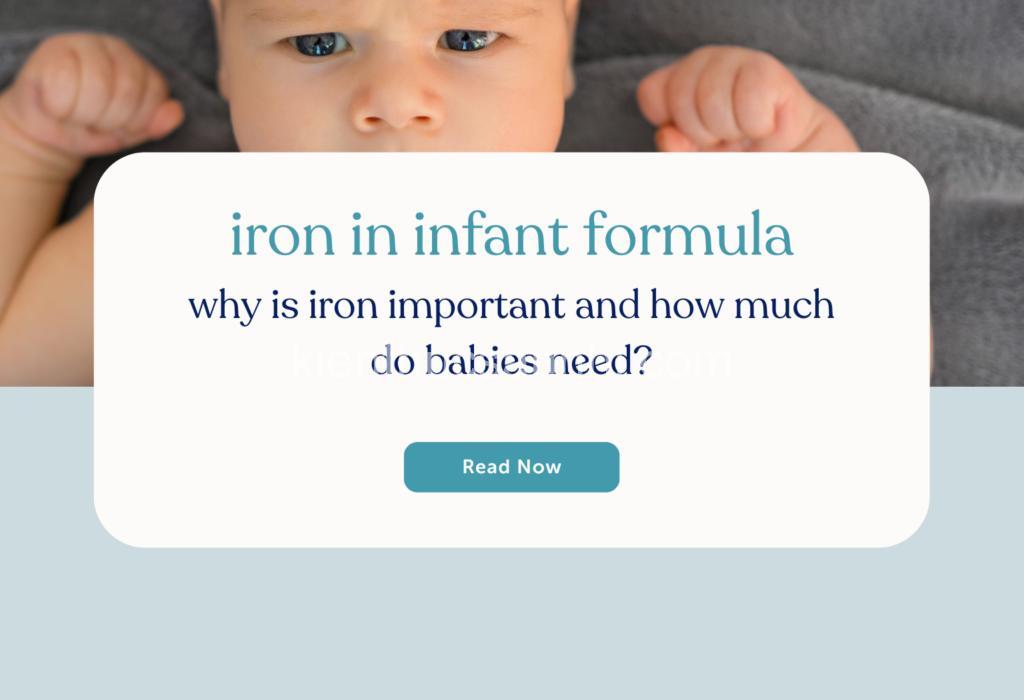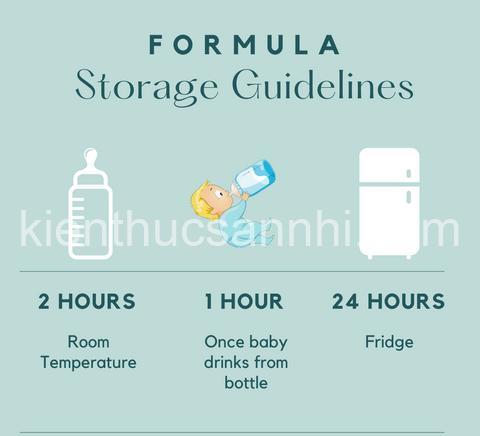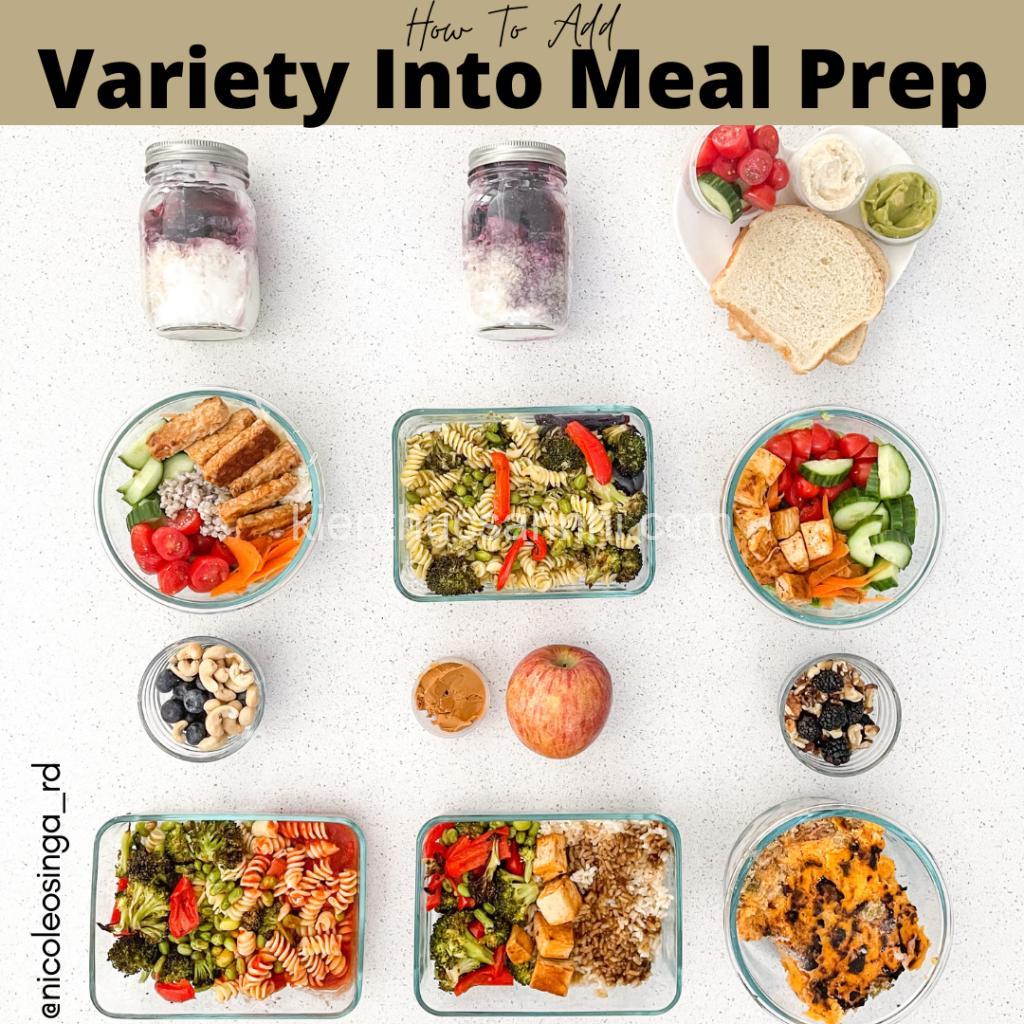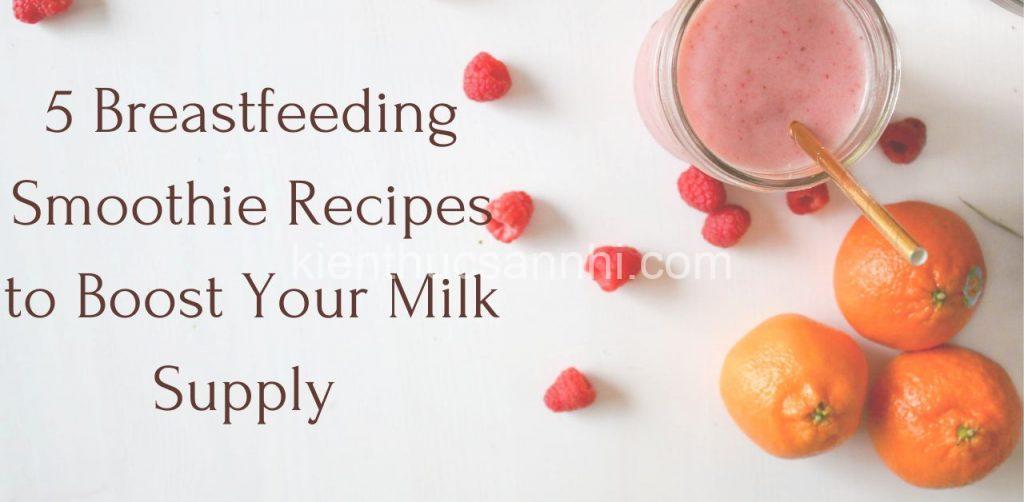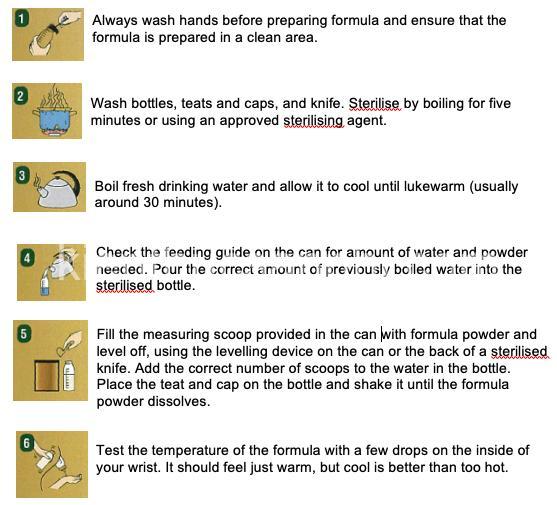
Formula Feeding in Daycare: A Safe & Supportive Environment. In today’s article, kienthucsannhi.com will explore with you in the most detailed and complete way. See now!
Establishing a Safe and Supportive Formula Feeding Environment in Daycare
A safe and supportive environment is crucial for formula-fed infants in daycare. This means open communication with parents, a dedicated formula preparation area, and essential feeding tools.
Communicating with Parents:
Building trust and clear communication with parents is essential. This includes understanding each infant’s specific needs, preferences, and allergies. Formula types, brand preferences, and feeding schedules should all be documented and readily accessible. Communicating through a combination of channels, like parent-teacher meetings, written notes, and online platforms, ensures consistent information sharing.
Creating a Dedicated Formula Preparation Area:
Designating a clean and organized area for formula preparation is paramount. This dedicated area should be equipped with a sink for handwashing, clean countertops, and appropriate storage for formula. Ensure the area is consistently sanitized, following strict hygiene standards. This helps prevent contamination and keeps the environment safe for infants.
Equipping the Daycare with Essential Tools:
Having the right feeding tools on hand is crucial. This includes bottles, nipples, sterilizers, and warmers. Bottles should be made from either glass or plastic, and available in various sizes (4 oz, 6 oz, 8 oz) to accommodate different feeding needs. Nipples should be selected based on the infant’s age and preferences, and sterilizers ensure hygiene. Warmers are essential for maintaining the correct temperature of the formula.

Implementing Formula Feeding Practices
Once you’ve established a supportive environment, it’s time to implement proper feeding practices. This includes step-by-step formula preparation, managing feeding times and routines, and monitoring bottle consumption and cleanliness.
Step-by-Step Formula Preparation:
Each step of formula preparation should be carried out with meticulous hygiene. Bottles and nipples should be washed and sterilized before use. Formula should be measured accurately using the provided scoop, and the correct amount of water should be added. Finally, the formula should be warmed to the correct temperature. It’s vital to ensure that the water used is clean and safe for consumption.
Managing Feeding Times and Routines:
Feeding times and routines should be tailored to the individual infant’s needs. It’s essential to be patient and observant during feeding. Infants may communicate their hunger or fullness through various cues like body language or vocalizations. Being attentive to these cues allows for flexible feeding times, ensuring the infant’s needs are met.
Monitoring Bottle Consumption and Cleanliness:
Monitoring bottle consumption is crucial to ensure infants are receiving enough nutrition. Bottles should be completely consumed to meet nutritional needs. Partially consumed formula should be discarded, and bottles should be thoroughly cleaned and sterilized after use.
Addressing Common Feeding Challenges
Formula feeding can sometimes present challenges. Two common issues are refusal and spitting up, as well as slow feeding and difficulty swallowing.
Refusal and Spitting Up:
Refusal of formula can occur for various reasons. Gas, overfeeding, or a change in formula could be contributing factors. Trying smaller amounts, different bottle nipples, or introducing a pacifier can help address refusal. Spitting up can be managed by burping frequently, holding the infant upright after feeding, and choosing bottles that are the right size for the infant.
Slow Feeding and Difficulty Swallowing:
Slow feeding and difficulty swallowing can indicate potential underlying medical conditions. Closely observing the infant’s behavior and consulting with parents and healthcare professionals is crucial in these situations. Providing extra support and patience during feeding can help facilitate a successful feeding experience.
Dispelling Myths and Addressing Concerns about Formula Feeding
Formula feeding often faces misconceptions and anxieties. Providing accurate and evidence-based information can help dispel myths and address common concerns about formula safety and efficacy.
Formula Safety and Efficacy:
High-quality formula is formulated to meet the nutritional needs of infants. It is safe for consumption and provides essential nutrients. However, it’s crucial to emphasize that parents should consult with healthcare professionals about the appropriate formula for their infant’s specific needs.
Formula Feeding vs. Breastfeeding:
Breastfeeding is often encouraged and promoted for its benefits, but it is important to recognize that formula feeding is a safe and acceptable choice for families who cannot breastfeed or choose not to. Supporting parents regardless of their feeding choices fosters a positive and inclusive environment.
Creating a Supportive Environment:
Creating a supportive environment for both formula-feeding and breastfeeding parents is crucial. Encouraging positive attitudes towards formula feeding among daycare staff and parents helps normalize this practice and makes it a comfortable choice.
Collaborating with Parents to Ensure Optimal Infant Care
Open communication and collaboration with parents are vital for ensuring optimal infant care. This involves regular communication about the infant’s feeding progress, addressing any feeding issues, and fostering a strong partnership for success.
Open Communication and Information Sharing:
Maintaining open and honest communication with parents is crucial. Daycare staff should regularly inform parents about the infant’s feeding progress, any challenges encountered, and changes made to the feeding routine. Parents should also be encouraged to share their concerns and questions.
Working Together to Address Feeding Issues:
When feeding issues arise, daycare staff and parents should collaborate to identify the cause and develop solutions. This could involve adjusting the feeding schedule, trying different bottles, or consulting with healthcare professionals. Working together ensures a coordinated approach to addressing the challenges and promoting a positive feeding experience.
Building a Partnership for Success:
Establishing a strong and trusting relationship between daycare staff and parents is essential. This partnership should be built on open communication, collaboration, and shared goals. Working together ensures that all parties are aligned in their commitment to providing the best possible care for formula-fed infants.
Frequently Asked Questions
What are the different types of formula available?
There are several types of formula available, including:
- Powdered formula: This is the most common type, and it needs to be mixed with water before feeding.
- Ready-to-use formula: This type comes pre-mixed and ready to feed, eliminating the need for additional preparation.
- Concentrated formula: This type needs to be diluted with water before feeding.
What are the key considerations when selecting a formula for an infant?
Several factors should be considered when selecting formula. These include:
- Infant’s age: Different formulas are designed for different age groups.
- Infant’s allergies: Some infants may have allergies to cow’s milk protein or soy, requiring special formulas.
- Nutritional needs: Certain formulas cater to specific nutritional needs, such as those designed for infants with premature birth or digestive issues.
What are the essential hygiene practices for formula feeding?
Maintaining strict hygiene practices is crucial to ensure the safety of formula feeding. These practices include:
- Thorough handwashing before handling formula.
- Using clean and sterilized bottles and nipples.
- Preparing formula with clean water and following manufacturer instructions.
- Properly storing and discarding unused formula.
How do I know if my infant is getting enough formula?
There are various ways to monitor your infant’s formula intake:
- Observe the infant’s weight gain and development.
- Pay attention to the infant’s feeding cues, such as their level of alertness and interest in feeding.
- Keep track of the amount of formula consumed at each feeding.
- Consult with a healthcare professional if you have any concerns.
What are some common challenges associated with formula feeding?
Some common challenges associated with formula feeding include:
- Refusal: Infants may refuse to take formula, which can be caused by various factors.
- Spitting up: Infants may spit up formula, which can be a normal occurrence but can also be a sign of an underlying medical condition.
- Slow feeding: Some infants may feed slowly, which can be due to various factors, such as difficulty swallowing or an underdeveloped suck reflex.
Conclusion
Providing a safe and supportive environment for formula feeding in daycare is essential for the well-being of infants. By implementing best practices and collaborating with parents, we can ensure that formula-fed infants receive optimal care. For more helpful tips and resources on animal care, please visit my website: https://kienthucsannhi.com. Share your thoughts and experiences in the comments below!
